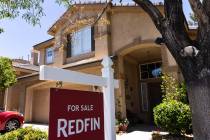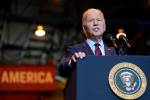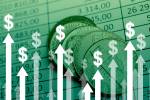Home price index shows 1st annual gain in 3 years
MIAMI -- Home prices in February posted their first annual increase since the end of 2006, lifted by temporary tax credits for homebuyers.
But there was no relief in Las Vegas -- it saw the largest annual price drop at almost 15 percent.
The Standard & Poor's/Case-Shiller home price index released Tuesday squeezed out a 0.6 percent gain. But that was half the increase analysts had expected. On a more cautionary note, 11 of the 20 cities tracked by the index showed declines from February last year.
The data underscored the fragile nature of the housing recovery. Nationally, home prices are up more than 3 percent from the bottom in May 2009, but still are 30 percent below the May 2006 peak.
And there is a "risk that home prices could decline further before experiencing any sustained gains," cautioned David Blitzer, chairman of the S&P index committee. "It is too early to say that the housing market is recovering."
Prices are getting a boost from temporary tax credits that expire at the end of April. First-time buyers can claim up to $8,000 and homeowners who buy and relocate can get up to $6,500. So buyers have more purchasing power.
That's helped propel prices in San Francisco up 12 percent, the best in the index. Likewise, in Los Angeles, San Diego and Washington prices climbed more than 5 percent.
But there are still pockets of weakness around the country. In addition to Las Vegas, several other markets -- Charlotte, N.C.; New York, Portland, Ore.; Seattle; and Tampa, Fla. -- saw the index fell to the lowest level since peaking in 2006 or 2007.
In Las Vegas -- a market hit hard by overbuilding and foreclosures -- appraisals are coming in consistently low, dragging down prices, said Brad Snyder, a local agent with ZIP Realty. Investors and first-time buyers are competing for homes in the lower price range.
"If the house is priced at $150,000, it's going to get a lot of action," Snyder said.
The Case-Shiller index measures home price increases and decreases relative to prices in January 2000. The base reading is 100; so a reading of 150 would mean that home prices increased 50 percent since the beginning of the index. The index registered 144.03 in February.
A rebound in prices is considered necessary to boost consumer optimism and help revive the economy. A home is the largest and most important financial asset for most Americans. So, as values climb, homeowners feel wealthier and more comfortable spending.
For homeowners who owe more on their mortgages than their properties are worth, rising prices rebuild equity.
Americans' confidence in the economy rose in April to the highest level since September 2008, just as the financial crisis escalated, a private research group reported Tuesday.
The upbeat reading, combined with bullish earnings reports this week from companies ranging from Whirlpool Corp. to UPS Inc., offers more hope the economic recovery is gathering steam.
But unlike U.S. businesses, which whittled down inventories during the recession, the housing market is suffering from a backlog of foreclosures. As banks unload these properties en masse, it could overwhelm demand and push prices down again.
"The bottom line is that we're still fighting an uphill battle against a shadow inventory of foreclosures," said Daniel Alpert, managing director of Westwood Capital LLC.
Still, it's "highly unlikely" that price declines will approach the slide suffered in late 2008 and early 2009, wrote Joshua Shapiro, chief U.S. economist for MFR Inc.
From January to February home prices fell almost 1 percent, without adjusting for seasonal factors. On an adjusted basis, they fell 0.1 percent.
Earlier this month, however, Standard & Poor's recommended clients not use its seasonally adjusted figures because they may be misleading. Normally, seasonal adjustments are applied to data that can be affected by the time of the year, or the seasons, like the traditional spring home shopping months. But the three-year surge in foreclosures appears to have magnified the seasonal factors in S&P's computer model, making them less reliable.























